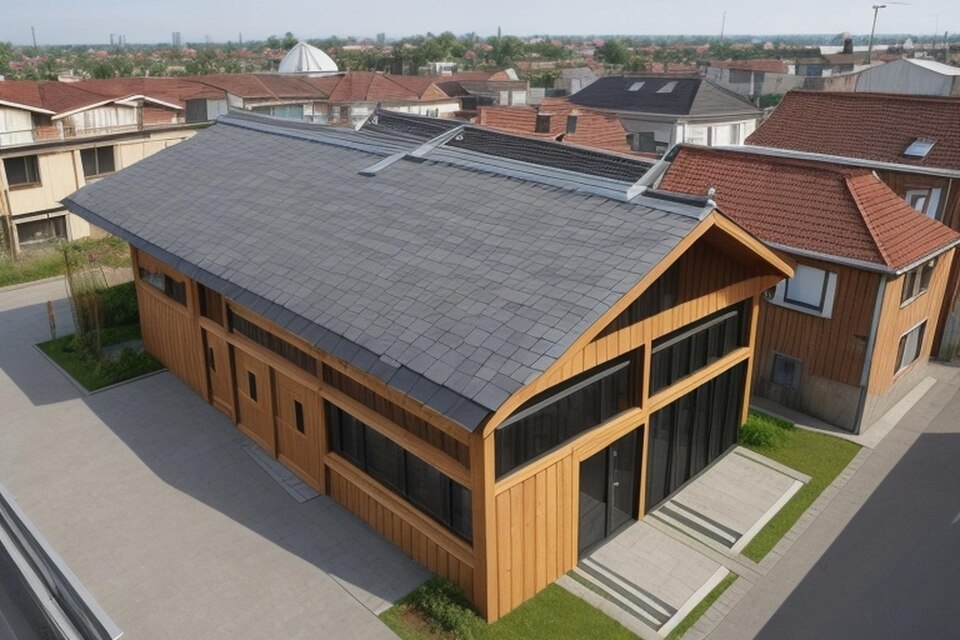What is Emergency Roof Tarping?
Emergency roof tarping protects your property from further damage after a storm or other unforeseen event. When a roof sustains damage, it becomes vulnerable to water intrusion, leading to significant structural issues and mold growth. Roof tarping provides a temporary, yet effective, solution to shield the building from the elements until permanent repairs can be made.
It involves covering the damaged areas of the roof with heavy-duty tarpaulins or sheets of specialized roofing material. These coverings are securely fastened to the roof using ropes, straps, or other appropriate methods. The goal is to create a watertight barrier that prevents rain, snow, and other precipitation from entering the building.
Let’s explore this process in detail.
The Importance of Prompt Action
Prompt action is crucial when addressing roof damage. The longer a roof remains exposed, the higher the risk of further deterioration. Water infiltration can weaken structural support, encourage mold growth, and create electrical hazards.
Emergency roof tarping is a critical service for both residential and commercial properties. For homeowners, it can help to prevent further damage to their homes and belongings, minimizing the disruption to their lives. For commercial businesses, prompt roof tarping can help to protect valuable inventory, equipment, and sensitive electronics from water damage, minimizing downtime and potential financial losses.
Property owners can significantly reduce these risks by promptly contacting a qualified roofing contractor like Apex Commercial Roofing LLC to perform emergency roof tarping. This swift action helps to protect the property from further damage and minimize the potential for more extensive and costly repairs.
At Apex Commercial Roofing LLC, we understand the need for emergency services to keep your business up and running. We offer 24/7 emergency response for those in NJ, NY, and PA. Contact us today at 856 203-6108 or 1 800 231-2941 if you suspect or see damage to your roof.
The Roof Tarping Process
The roof tarping process typically involves the following steps:
- Assessment of the Damage: A qualified roofing contractor will conduct a thorough inspection of the roof to assess the extent of the damage. This may involve using drones or other specialized equipment to safely inspect hard-to-reach areas.
- Preparation of the Work Area: The work area around the damaged area of the roof will be prepared to ensure the safety of both the workers and the property. This may involve clearing debris and setting up safety barriers.
- Installation of the Tarping Material: The chosen tarping material will be carefully installed over the damaged area. The contractor will ensure that the tarping is securely fastened to the roof using appropriate methods, such as ropes, straps, and specialized adhesives.
- Inspection and Leak Testing: Once the tarping is installed, the contractor will conduct a thorough inspection to ensure that it is properly secured and watertight. They may also perform a leak test to verify the effectiveness of the tarping.

Choosing the Right Tarping Material
The choice of tarping material will depend on several factors, including the extent of the damage, the type of roofing material, and the weather conditions. Some common types of tarping materials used in emergency roof repairs services include:
- Heavy-duty vinyl tarps: These are a cost-effective option that is suitable for many types of roof damage.
- Specialized roofing felt: This material is more durable and weather-resistant than standard vinyl tarps, making it a good choice for long-term temporary repairs.
- Rubberized roofing membranes: These are highly durable and waterproof membranes that can provide excellent protection against severe weather conditions.
The Benefits of Emergency Roof Tarping
Emergency roof tarping offers several key benefits:
- Protects against further water damage: The primary benefit of roof tarping is to prevent further water intrusion into the building. This can help to protect the building’s structure, prevent mold growth, and safeguard valuable possessions.
- Minimizes disruption to daily life: For homeowners, emergency roof tarping can help to minimize the disruption to their daily lives by preventing further damage to their homes and belongings.
- Reduces the risk of electrical hazards: Water intrusion can create electrical hazards, such as short circuits and electrical shocks. Roof tarping can help to reduce these risks.
- Provides time for permanent repairs: Roof tarping provides a temporary solution that allows property owners to have time to plan and schedule permanent roof repairs.
Commercial Roofing Considerations
For commercial roofing, prompt emergency roof tarping is crucial to minimize business disruption and protect valuable assets. Commercial buildings often house sensitive equipment, inventory, and valuable data, all of which can be severely damaged by water intrusion.
Prompt roof tarping can help to:
- Protect valuable inventory and equipment: By preventing water intrusion, roof tarping can help to safeguard valuable inventory, machinery, and other assets from damage.
- Minimize business downtime: Water damage can cause significant disruptions to business operations. By promptly addressing roof damage, businesses can minimize downtime and maintain productivity.
- Protect sensitive electronics: Water intrusion can severely damage sensitive electronics, such as computers and servers. Roof tarping can help to protect these critical systems.
- Maintain a safe and healthy work environment: Water damage can create safety hazards, such as slippery floors and the potential for mold growth. Roof tarping can help to maintain a safe and healthy work environment for employees.
Finding a Qualified Roofing Contractor
When dealing with roof damage, it is crucial to engage a qualified and experienced roofing contractor. Look for a contractor with a proven track record of success in emergency roof repairs.
Here are some key factors to consider when choosing a roofing contractor:
- Experience and expertise: Choose a contractor with extensive experience in handling emergency roof repairs.
- Licensing and insurance: Ensure that the contractor is properly licensed and insured.
- Customer reviews and testimonials: Read online reviews and testimonials from previous customers to get a sense of the contractor’s reputation and customer satisfaction.
- Free estimates: Obtain free estimates from several reputable contractors to compare prices and services.
- Warranty and guarantees: Inquire about the contractor’s warranty and guarantee policies.
You can trust Apex Commerical Roofing LLC with your next commercial roof repair. We are there for you 24/7 and can work with you to waterproof your roof. We offer commercial roof coating services. Check out our services in Pennsylvania, New York, and New Jersey.
What is Emergency Roof Tarping?
Emergency roof repair apex services, including emergency roof tarping, are a critical step in protecting your property from further damage after a storm or other unforeseen event. By promptly engaging a qualified roofing contractor, property owners can minimize the risks associated with roof damage and ensure that their property is properly protected.
Remember, for emergency roof leak service commercial, prompt action is essential to minimize business disruption and protect valuable assets. By choosing a reputable roofing contractor and taking proactive steps to protect your roof, you can minimize the impact of unexpected roof damage and ensure the long-term safety and integrity of your property.
If you are in need of our services, come visit Apex Commerical Roofing LLC’s main office at 811 Church Road, Cherry Hill, NJ 08057.
Visit Apex Commercial Roofing LLC at Our Cherry Hill Location
811 Church Rd #105,
Cherry Hill, NJ 08002,
United States
For professional roofing services, including emergency roof repair NJ, we invite you to stop by or reach out to us.







